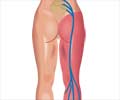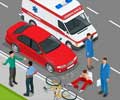
Sills and her colleagues focused on long bone fractures – broken arms and legs - because they are common among children and very painful.
The study was published this month in the journal Academic Emergency Medicine.
Sills, associate professor of pediatrics at the CU School of Medicine, studied 1,229 patients treated in the emergency department of an academic children's hospital over a year-long period.
She found that patients were 4 to 47 percent less likely to receive timely care and 3 to 17 percent less likely to receive effective care when crowding was at the 90th rather than the 10th percentile.
Five previous studies have shown that crowded emergency rooms lead to lower levels of pain control among adult patients. But this was the first time researchers investigated the impact of crowding on children with fracture-related pain.
Advertisement
Although not studied in this article, Sills speculates that the reasons for this are varied. In some emergency departments, for example, only doctors can authorize the use of potent opioids for pain, whereas in other settings, hospital policy permits nurses to administer analgesia to patients meeting specific criteria.
Advertisement
Another idea, Sills said, is to create incentives for patients to seek care at their own doctor's office, including better compensation for primary care and disincentives for non-emergency use of emergency departments.
Sills has studied hospital crowding for years. She recently published a paper showing that children's hospitals nationwide were underequipped to handle a major pandemic due to a shortage of beds.
"Crowding is a serious issue for everyone. It is caused by a variety of things, from patients who too readily use emergency departments to federal policies that exacerbate the problem," Sills said. "We as a nation need to get serious about this. Crowding needs to be a policy priority at every level."
Source-Eurekalert















